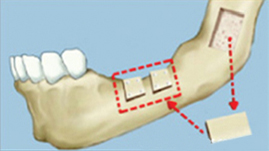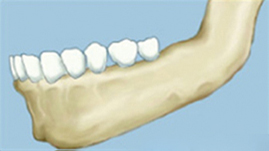Why Do I Need Bone Grafting?
Your jawbone is stimulated by your tooth roots; much like exercise stimulates your muscles. When you have missing teeth, your jawbone is no longer stimulated by the tooth roots, and it will shrink over time. When this occurs, there may not be sufficient bone required to place dental implants. Bone grafting is also used to repair supporting bone around your teeth that has been damaged by periodontal disease.
What Is Bone Grafting?
Bone grafting is a procedure to rebuild bone in the bone deficient areas of your jaw. This allows for the placement of dental implants and for repair of the supporting bone around your teeth damaged by periodontal disease.
What Does Bone Grafting Involve?
The bone used in the bone grafting procedure is either taken from your jaw, hip, or tibia (below the knee), or obtained from a tissue bank. Special membranes may be used to protect the bone graft and promote natural healing and bone growth – this is known as guided bone regeneration.
What Are The Benefits Of Bone Grafting?
By regenerating bone tissue, patients who previously did not qualify for the placement of dental implants due to insufficient bone, can now become candidates for this tooth replacement procedure.
For patients affected by periodontal disease, bone grafting will repair the supporting bone around your teeth significantly improving your oral health. Bone grafting will also increase the stability and strength and increase the longevity of your natural teeth as they will now be supported by adequate bone in your jaw. Overall, the functionality of your teeth and your esthetic appearance will dramatically improve.



Gum Grafting
Depending on the severity of gum recession that you are experiencing, you may be a candidate for a procedure known as Gum Grafting.
Gum grafting can be used to treat more severe cases of gum recession, while more minor cases of gum recession can be treated with in-home methods.
When your gums recede, and expose the root surface, you may experience several very painful and serious effects including:
- Sensitivity to hot and cold
- Unsightly appearance of your gum line
- Cavities
- Root gouging
A gum graft provides coverage of the exposed root by grafting a thin piece of tissue, typically taken from the roof of the mouth.
